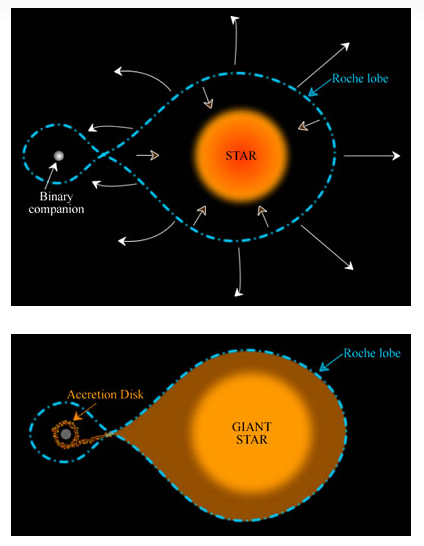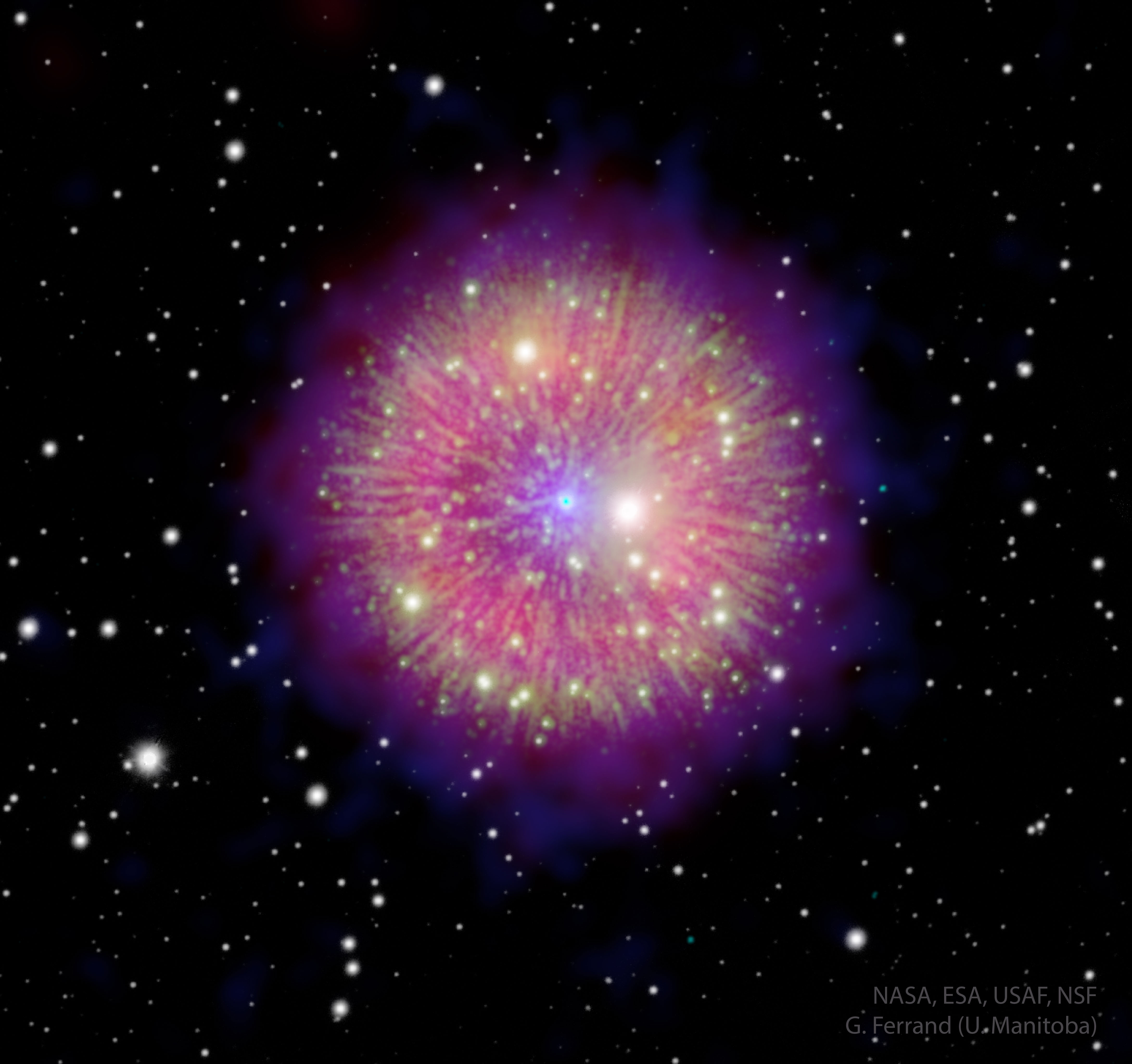Astronomers have intensely studied a zombie star lurking within the coronary heart of supernova wreckage. Such a cosmic explosion ought to have destroyed this undead white dwarf star, however as a substitute, it marked its celestial grave with a “flower” created from particles.
Now, astronomers have turned the occasion right into a 3D film.
Humanity first grew to become conscious of this star’s dying throes in 1181 when a brand new star, or “visitor star,” appeared within the constellation of Cassiopeia for six months earlier than fading away. This really made the supernova, now designated SN 1181, one of many few supernovas noticed earlier than the invention of the telescope. In 2021, beginner astronomer Dana Patchick tracked SN 1181 again to its location within the nebula Pa 30 that is located inside the Milky Method, figuring out the supernova erupted round 1,000 years in the past (about 200 years earlier than our ancestors noticed and documented it).
And not too long ago, a group led by Tim Cunningham from the Heart for Astrophysics, Harvard & Smithsonian, and Ilaria Caiazzo, assistant professor on the Institute of Science and Know-how Austria (ISTA), have carried out an in depth research of the stays of SN 1181.
“Our first detailed 3D characterization of the rate and spatial construction of a supernova remnant tells us lots a few distinctive cosmic occasion that our ancestors noticed centuries in the past,” Caiazzo stated in an announcement. “However it additionally raises new questions and units new challenges for astronomers to deal with subsequent.”
Clearly, SN 1181 is not your typical supernova, which is why it has fascinated astronomers like Cunningham and Caiazzo. It is because white dwarfs like this zombie star should not have survived the cosmic horror present that birthed them.
When a star explosively returns from the lifeless
SN 1181 is a part of a sub-class of supernova known as “Sort Ia supernovas.” These kinda of supernovas are often so uniform that astronomers confer with them as customary candles as a result of it is doable to make use of them when measuring celestial distances. To be clear, these aren’t the kind of supernovas that mark the dying of a star when the star runs out of gas wanted for nuclear fusion and collapses beneath the affect of its personal gravity (leaving a black gap or neutron star in is wake).
As a substitute, Sort Ia supernovas start with a lifeless star, one that’s ravenously feeding from a stellar companion. These cosmic ghouls are white dwarfs, the sort of stellar corpse the solar will even depart behind when it dies in round 6 billion years. Nevertheless, the solar’s white dwarf section will mark its peaceable relaxation as a cooling and fading cosmic ember — different white dwarfs might not see such tranquility.
Similar to in a Hammer horror film starring Christopher Lee, it’s all the time some hapless bystander who pulls the stake from Dracula’s chest earlier than turning right into a meal. That is the lifeless stars’ companions that come too shut.
That is as a result of when these future “donor stars” swell up of their crimson big phases, (which can ultimately finish in them changing into white dwarfs themselves) they fill their part of the system past a sideways-figure-eight-shaped restrict known as a “Roche lobe.” This leads to “Roche lobe overflow,” with matter flowing from this donor star to the white dwarf, inflicting the white dwarf to spring again to life.
Nevertheless, this case cannot proceed ceaselessly. Similar to Lee’s Dracula typically did, these white dwarfs ultimately get a contact too grasping.

Because the white dwarf feeds from its cosmic companion, the fabric it strips away cannot fall on to the lifeless star as a result of the fabric nonetheless has angular momentum. Which means materials varieties a swirling flattened cloud, known as an accretion disk, across the white dwarf that regularly feeds it. But, regardless of a slowed supply, this stolen stellar matter nonetheless piles up on the floor of the white dwarf, inflicting it to turn out to be unstable.
The state of affairs ends with a thermonuclear explosion that fully destroys the white dwarf. However this cosmic horror story does not all the time have such a neat ending; typically, there’s a sequel within the offing. That’s as a result of, in very uncommon events, the white dwarf star is not fully destroyed within the supernova. As a substitute, it lives on as a shattered remnant, or “zombie star.”
These occurrences are known as “Sort-Iax supernovas,” and astronomers suppose they might account for as little as 5% of Sort Ia supernovas. As you’ll have guessed, SN 1181 is an instance of a Sort-Iax supernova.

The Sort-Iax supernova within the nebula Pa 30 has left this zombie star one of many hottest stellar our bodies within the Milky Method, with an estimated floor temperature of round 360,000 levels Fahrenheit (200,000 levels Celsius). For comparability, the solar has a floor temperature of round 10,000 levels Fahrenheit (5,500 levels Celsius).
Moreover, this zombie star violently lashes out at the remainder of its residence nebula with stellar winds that attain speeds of 36 million miles per hour. That is about 45,000 instances as quick because the velocity of sound when measured right here on Earth, or 25,000 instances as quick as the highest velocity of a Lockheed Martin F-16 jet fighter (clearly, this undead star is just not a type of conventional sluggish zombies, as seen roaming all through a George Romero flick).
Such violent nature makes this shattered white dwarf a great candidate for the research of those uncommon supernovas, and that’s precisely what Cunningham, Caiazz and colleagues set about doing.
Magnificence emerges from horror
To conduct this investigation, the group turned to knowledge collected by the Keck Cosmic Net Imager (KCWI). It is a spectrograph positioned 13,000 ft (4,000 meters) above sea degree close to the summit of Mauna Kea volcano, Hawaii’s highest peak, on the W. M. Keck Observatory.
KCWI is able to detecting the universe’s faintest sources of sunshine emanating from the “cosmic internet,” the biggest construction within the cosmos the place matter makes use of a “roadway” to reach in clumps, forming galaxies and galaxy clusters.
The sensitivity of this instrument, which might collect a spectrum of sunshine from each pixel it creates, allowed the group to construct a 3D mannequin of SN 1181 and visualize the movement of its wreckage. That permit the group construct a “film” of this supernova particles. In earlier research, SN 1181 has appeared as a static “fireworks show.”
The end result was a surprising, dynamic picture resembling the rising petals of a cosmic dandelion created by filaments of matter racing out at unbelievable speeds. Extremely, nonetheless, the group additionally discovered that these filaments have not slowed for the reason that explosion that launched them.
“The ejected materials has not been slowed down, or sped up, for the reason that explosion,” Cunningham stated in an announcement. “Thus, from the measured velocities, wanting again in time allowed us to pinpoint the explosion to nearly precisely the 12 months 1181.”
Regardless of the unbelievable nature of those outcomes, the research of SN 1181 is not possible to attract to a detailed simply but. The 3D modeling has left some questions that also must be answered. As an illustration, the group discovered that, past the dandelion-shaped filaments and their ballistic enlargement, the general form of the supernova was not what was anticipated.
Cunningham, Caiazzo and colleagues demonstrated that the fabric flung away by the supernova, and sealed inside the filaments, is surprisingly asymmetrical. This unbalanced geometry possible stems from the unique explosion itself, suggesting it proceeded asymmetrically. Moreover, like shrapnel, the filaments seem to have a pointy internal edge, revealing an internal void surrounding the zombie star.
Like our delight with tales of ghouls, scientists’ fascination with SN 1181 and its undead occupant appears set to proceed lengthy into the long run.
The group’s analysis was revealed on Thursday (Oct. 24) in The Astrophysical Journal Letters.





